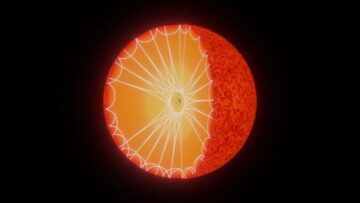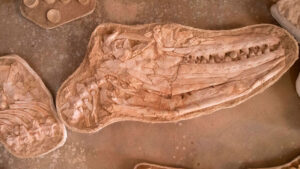Despite the rapid development of photonic devices and systems, on-chip information technologies are mostly limited to two-level systems owing to the lack of sufficient reconfigurability to satisfy the stringent requirement. Even with extensive efforts dedicated to recently emerged vector lasers and microcavities to expand dimensionalities, it remains a challenge to actively tune the diversified, high-dimensional superposition states of light on demand.
Scientists from Penn Engineering have created a hyperdimensional, spin-orbit microlaser chip that outstrips the security and robustness of existing quantum communications hardware. Their system uses “qudits” for communication, doubling the quantum information space of earlier on-chip lasers.
Advanced quantum devices use qubits, units of digital information capable of being both 1 and 0 simultaneously. In quantum mechanics, this state of simultaneity is called “superposition.” A quantum bit in a state of superposition greater than two levels is called a qudit to signal these additional dimensions.
The new device uses four-level qudits that enable significant advances in quantum cryptography. Moreover, the device offers four levels of superposition and opens the door to further increases in dimension.
Materials Science and Engineering (MSE) postdoctoral fellow Zhifeng Zhang said, “The biggest challenge was the complexity and non-scalability of the standard setup. We already knew how to generate these four-level systems, but it required a lab and many different optical tools to control all the parameters associated with the increase in dimension. Our goal was to achieve this on a single chip. And that’s exactly what we did.”
The hyperdimensional spin-orbit microlaser advances the group’s past work with vortex microlasers, which sensitively regulate photons’ orbital angular momentum (OAM). The recent device adds control over photonic spin to the preceding laser’s capabilities.
This additional level of control—being able to manipulate and couple OAM and spin—is the breakthrough that allowed them to achieve a four-level system.
The main experimental achievement of the team’s work is the simultaneous control of all the parameters that had been preventing qudit creation in integrated photonics.
ESE Ph.D. student Haoqi Zhao said, “Think of the quantum states of our photons as two planets stacked on top of each other. Before, we only had information about these planets’ latitudes. With that, we could create a maximum of two levels of superposition. We didn’t have enough information to stack them into four. Now, we have longitude as well. This is the information we need to manipulate photons in a coupled way and achieve dimensional increase. We coordinate each planet’s rotation and spin and hold the two planets in strategic relation to each other.”
Liang Feng, Professor in the Departments of Materials Science and Engineering (MSE), said, “There is a lot of concern that mathematical encryption, no matter how complex, will become less and less effective because we are advancing so quickly in computing technologies. Quantum communication’s reliance on physical rather than mathematical barriers makes it immune to these future threats. It’s more important than ever that we continue to develop and refine quantum communication technologies.”
Journal Reference:
- Zhang, Z., Zhao, H., Wu, S. et al. Spin-orbit microlaser emitting in a four-dimensional Hilbert space. Nature (2022). DOI: 10.1038/s41586-022-05339-z













